*This post may contain affiliate links. Read more »
If there’s is one plant-based condiment available at most warungs in Bali, it’s Sambal Matah.
Unlike most of Indonesia’s most famous sambal varieties, such as sambal goreng (goreng means fried), Sambal Matah is enjoyed raw, preserving the fresh, vibrant flavors of its ingredients. The use of lemongrass-infused coconut oil adds a unique vibe to the condiment. It beautifully balances spicy, sweet, sour, and umami flavors, making it a versatile and harmonious addition to many dishes.
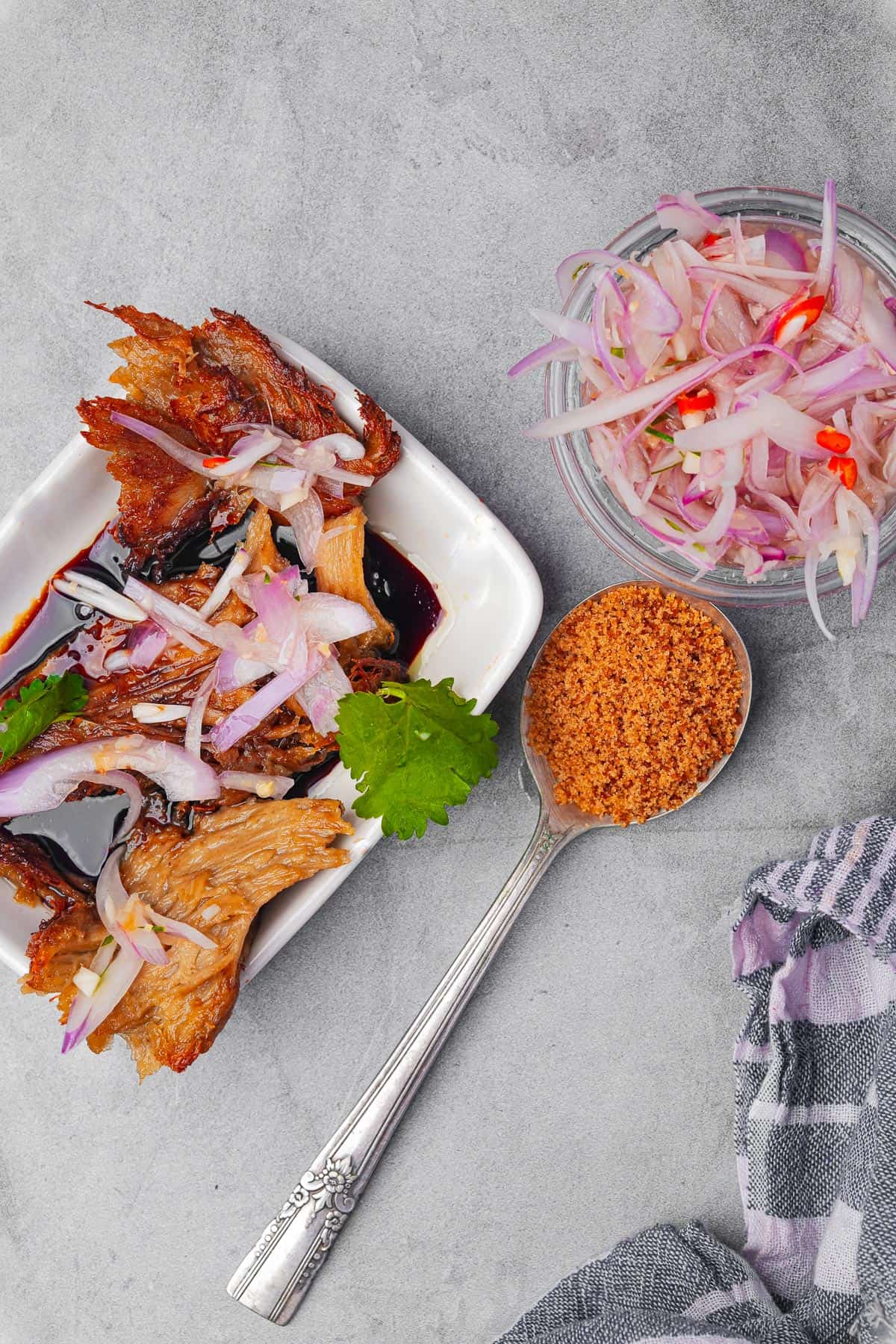

Enter your email & I'll send it to your inbox. Plus, get great new recipes from me every week!
By submitting this form, you consent to receive emails from Cinnamon Snail.
Having a little glass jar on the table for people to upgrade their urap sayur, or asinan Jakarta is an effortless way to make people’s meals more customizable with a little fire, a hint of makrut lime, and the pungent notes of fresh, paper-thin sliced shallots. This has all the dimensions of flavor that make Balinese cuisine renowned worldwide.
Grab a hot or iced cup of bandrek, a few simple ingredients, trust in the process, and let's get started!
Jump to:
🥰Why you'll adore this sambal matah recipe
✊ Vegan AF: Like all of my Indonesian and Malaysian recipes, this condiment is 100% plant-based. No belacan (shrimp paste) to be found here! It also just happens to be gluten-free.
💣 Healthy Flavor Bomb: Sambal Matah isn't just crazy-tasty; it's also packed with vitamin C and antioxidants. A study of antioxidants revealed that shallots have the highest amount of any onion variety.
✅ Tested and Approved Worldwide: Like all recipes on my blog, this Sambal Matah has been meticulously perfected and rigorously tested by a large team of recipe testers from all over the world. My testers LOVE the simplicity and flavorful outcome of this straightforward recipe.


Warning: This Will Transform Your Vegan Indo Cooking!
This 6-day plant-based deep dive into the vibrant cuisine of Indonesia is 100% FREE.
🧅 Sambal Matah Ingredients
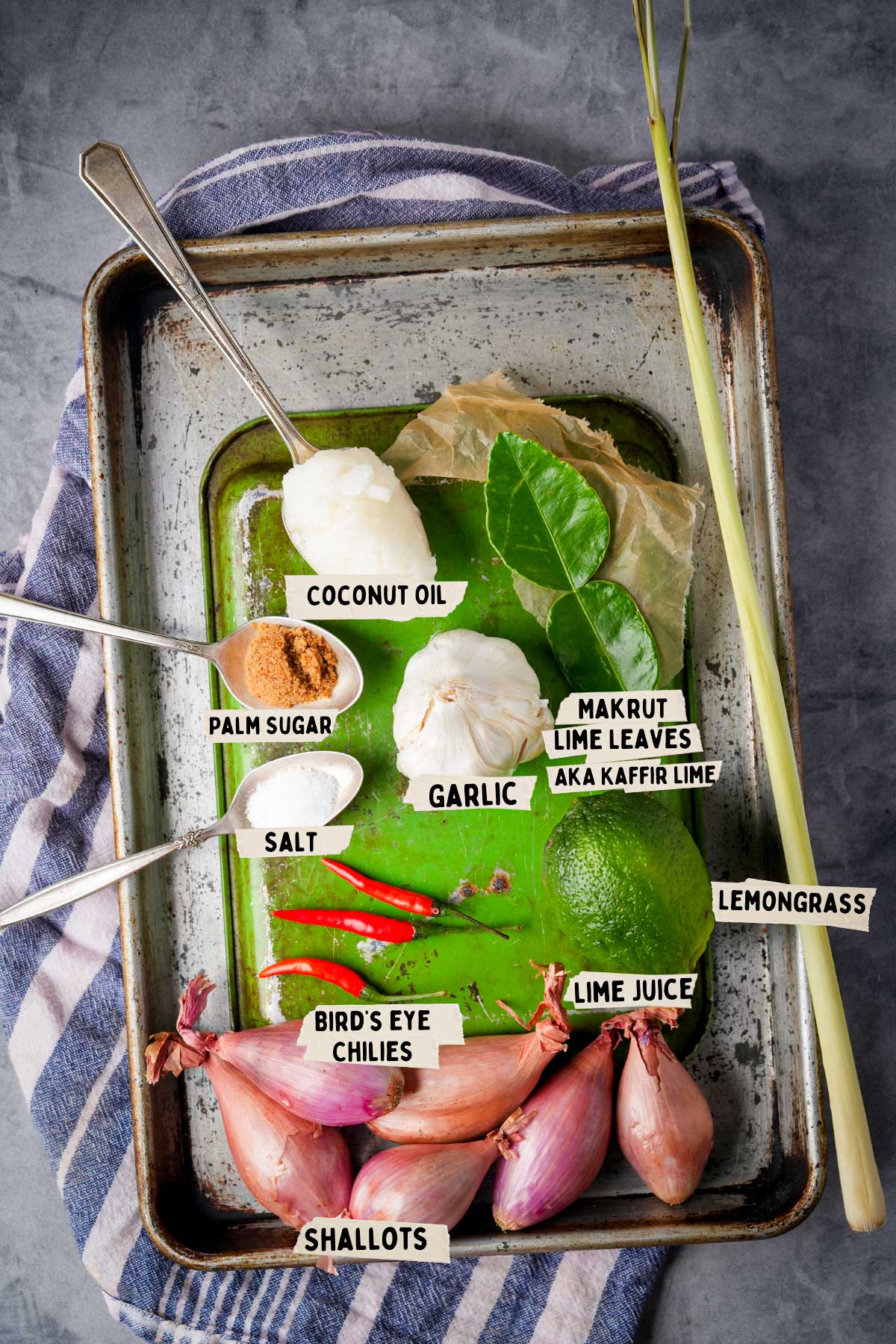
Makrut Lime
Makrut lime leaves, known by some as kaffir lime leaves (though it's important to note that "kaffir" is considered offensive in some cultures), are a staple in Southeast Asian cuisine. I use them to make everything from tom yum paste to turmeric rice. Finely sliced, they infuse the condiment with a refreshing zing. If you can't find makrut lime leaves, you can substitute with fresh lime zest for a weaker, but somewhat similar citrusy kick.
Lemongrass
Lemongrass, a fragrant stalk native to Southeast Asia, lends a citrusy, herbal note to dishes like nasi uduk betawi. It's finely minced and incorporated to create a delightful aroma and subtle lemony undertones. If fresh lemongrass isn't available, you can use dried lemongrass or lemongrass paste as a substitute, adjusting the quantity to taste.
Shallots
Shallots, or one medium red onion as a substitute, provide a sweet and mild onion flavor to balance the heat of the chilies in Sambal Matah. Try to slice them as thinly as possible of the best results in this condiment. You may even want to use a mandolin to get them paper thin.
Bird's Eye Chilies
Bird's eye chilies are the fiery stars so many Southeast Asian dishes. Everything from pad wood sen, to bihun goreng is best made with what is known in the west as “Thai Chilies”, and is known in Indonesia as Cabe Rawit. If you prefer a milder heat, you can reduce the quantity of chilies or substitute with milder peppers like serranos or jalapeños.
Coconut Oil
Coconut oil, with its subtle coconut aroma, binds all the flavors together in Sambal Matah. It adds a touch of creaminess and enhances the overall texture. If you're not a fan of coconut flavor, use a refined coconut oil, or you can use other neutral oils like grapeseed or avocado oil as a substitute without compromising the dish's integrity.
Palm Sugar
Often called Malacca sugar (the Malaysian name), Gula Aren, or Gala Jawa (the Indonesian names), palm sugar is the secret to balancing the tangy notes of this condiment. Nothing works quite as well as palm sugar in desserts like buber sum sum, kuih dadar, kolak biji salak, and klepon where it’s sorta the main attraction. If you can't find palm sugar, coconut sugar or brown sugar can work as substitutes.
*See the recipe card at the bottom of the page for exact quantities, nutritional info, and detailed cooking directions.
📖 How to make perfect sambal matah
Nail this Balinese raw condiment on your first shot by following these step-by-step instructions with important tips. Or you can follow along with the easy-to-print recipe card towards the bottom of this page.

Step One
Combine Ingredients:
In a mixing bowl, blend thinly sliced shallots (or red onion), garlic, makrut lime leaves, minced bird’s eye chilies, lime juice, salt, and sugar.

Step Two
Undress Lemongrass:
Trim away tough outer lemongrass leaves, leaving the tender white inner part.
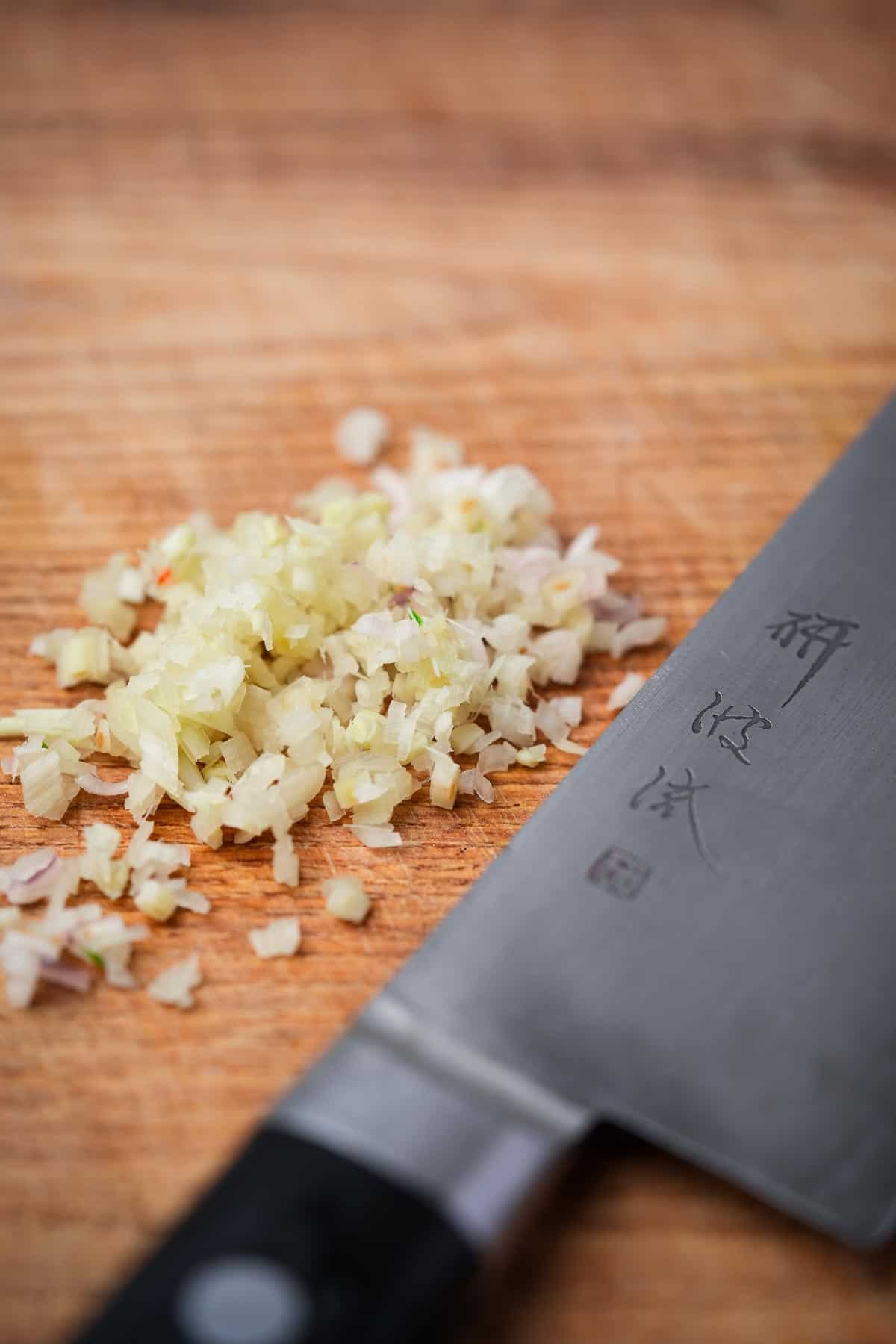
Step Three
Mince Lemongrass:
Finely chop the tender white lemongrass; aim for about two tablespoons.

Step Four
Infuse Coconut Oil:
Heat coconut oil in a small pan over medium heat. Once hot, add minced lemongrass. Cook for 1-2 minutes to infuse the oil.

Step Five
Combine and Chill:
Pour the fragrant lemongrass oil into the vegetable mixture. Gently combine all ingredients.
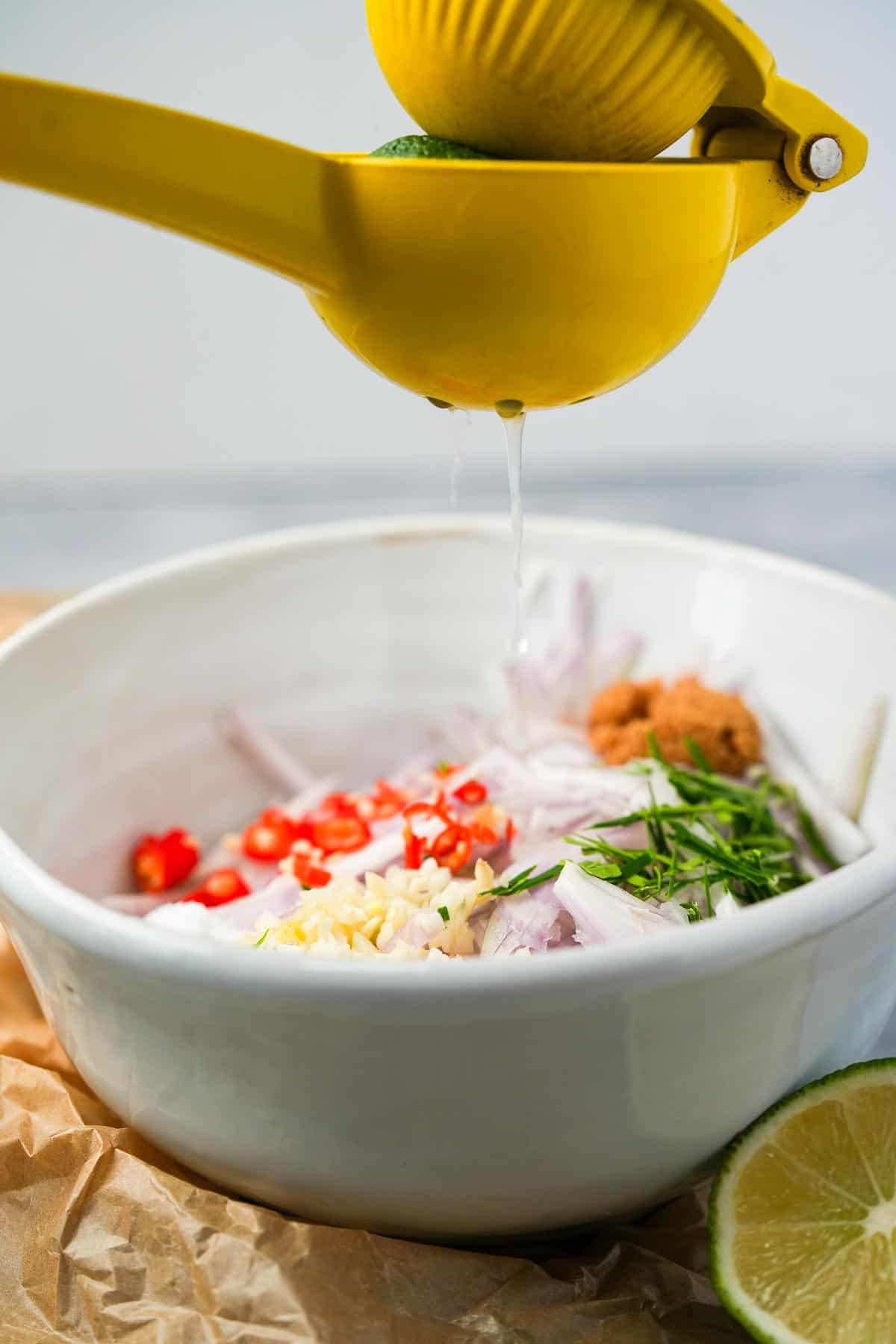
Step Six
Add fresh lime juice.

Step Seven
Let your Sambal Matah cool and allow the flavors to be absorbed into the shallots for at least 20 minutes before serving.
💡Serving Ideas
Indonesian food is full of tasty but heavily cooked flavors. Sambal Matah is the easiest way to bring a little touch of raw, flavorful intensity to the table. I always like a little something raw with cooked food to freshen it up, which is partially why many of my recipes at least call for a garnish.
Try serving it as a topping for Sayer Lodeh with banana leaf steamed Lontong.
Its great alongside miso glazed eggplant over Nasi Kunyit, Nasi Minyak, or Nasi Uduk Betawi. The Sambal Matah adds a burst of flavor to these fragrant rice dishes.
Sambal Matah is a fantastic choice to top off dishes like Bami Goreng, Ketoprak, Mee Rebus, Khao Suey, Mee Goreng, or Mi Xao Xi Dau.
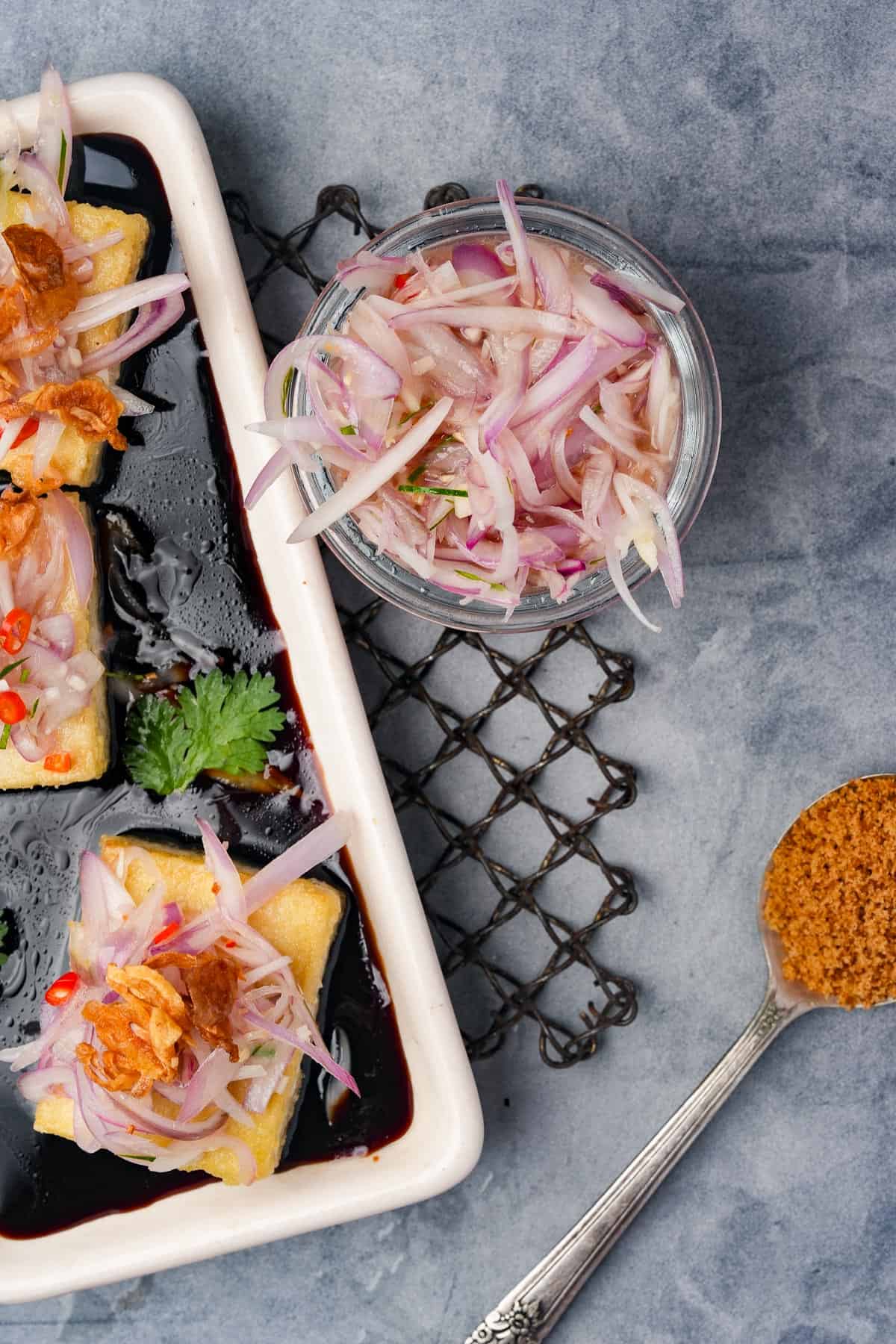
👉Top tips
- Meticulous Ingredient Prep: Take your time to finely slice the shallots (or red onion), mince the bird's eye chilies, and thinly slice the makrut lime leaves. Super thin slicing especially of the shallots makes this condiment so much nicer.
- Balancing Heat: Adjust the quantity of bird's eye chilies to your spice preference. If you prefer milder heat, use fewer chilies, or for more intense heat, add a tiny spoonful of fermented shatta paste or your fave chili sauce.
- Marry the Flavors: Here comes the bride… After mixing all the ingredients, allow your Sambal Matah to sit for at least 15 minutes before serving. This resting period allows the flavors to mingle, creating a more harmonious and flavorful condiment.
- Important Thawing: If you store the sambal in the refrigerator, the coconut oil will solidify. Allow it to come to room temperature before serving it, so it’s not all stuck together.
🤷♀️FAQ
This Balinese sambal can be quite spicy due to the bird's eye chilies, and the intense pungency of raw shallot and garlic. You can control the spice level by adjusting the number of chilies to suit your taste.
Yes, Sambal Matah can be prepared in advance and stored in an airtight container in the refrigerator for up to 5 days. The flavors may even intensify over time. Because this is a mostly raw sambal, remember that bacteria present in the veggies haven't been killed by cooking. So, if you notice anything funky smelling or looking, chuck the batch in your compost heap rather than taking any risks.
If you can't find fresh or frozen makrut lime leaves, you can use crushed dried makrut lime leaves, or fresh lime zest.
Yes, this Sambal Matah is vegan, as it contains no animal products. Some people use shrimp paste in theirs, so don’t always assume it to be vegan if you spot it on a table at a restaurant.
💣 Bomb dishes to serve with this Balinese sambal:

Sambal Matah (Raw Balinese Condiment)
Equipment
- Small pan
- Measuring spoons
Ingredients
- 6 shallots or one medium red onion, thinly sliced
- 2 cloves garlic minced
- 2 makrut lime leaves (aka kaffir lime leaf) thinly sliced, stem discarded
- 3 bird’s eye chilies (or to tast) destemmed and thinly sliced
- ½ teaspoon salt
- 1 teaspoon palm sugar or coconut sugar, or brown sugar
- 4 inches lemongrass ( 10 cm.)
- 2 tablespoons refined coconut oil
- 4 teaspoons lime juice
Instructions
- In a mixing bowl, combine the thinly sliced shallots (or red onion), garlic, thinly sliced makrut lime leaves, minced bird’s eye chilies, salt and sugar.
- Remove the tougher outer leaves of the lemongrass so that only the more tender inner white part remains.
- Finely mince the tender white lemongrass. The yield should be about two tablespoons.
- In a small pan, heat the coconut oil over medium heat. When the oil is hot, add the minced lemongrass. Cook this mixture for about 1-2 minutes, infusing the oil with the lemongrass flavor.
- Pour the hot lemongrass oil into the prepared vegetables, and gently mix all the ingredients together until they are well combined.
- Add fresh lime juice. Let your Sambal Matah cool and allow the flavors to be absorbed into the shallots for at least 20 minutes before serving.
Notes

Enter your email & I'll send it to your inbox. Plus, get great new recipes from me every week!
By submitting this form, you consent to receive emails from Cinnamon Snail.


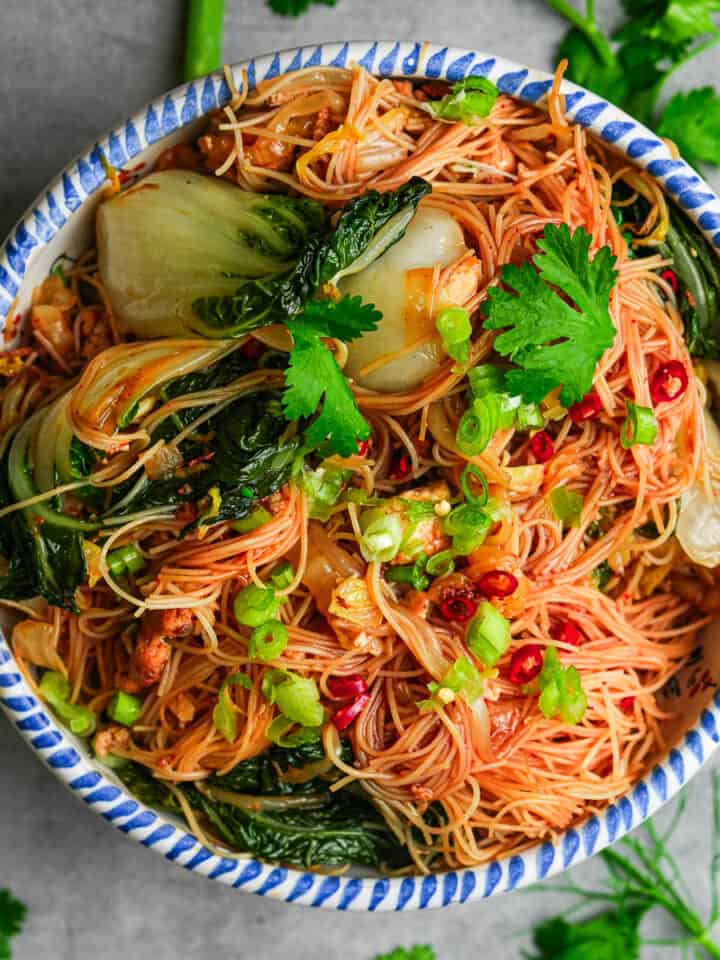
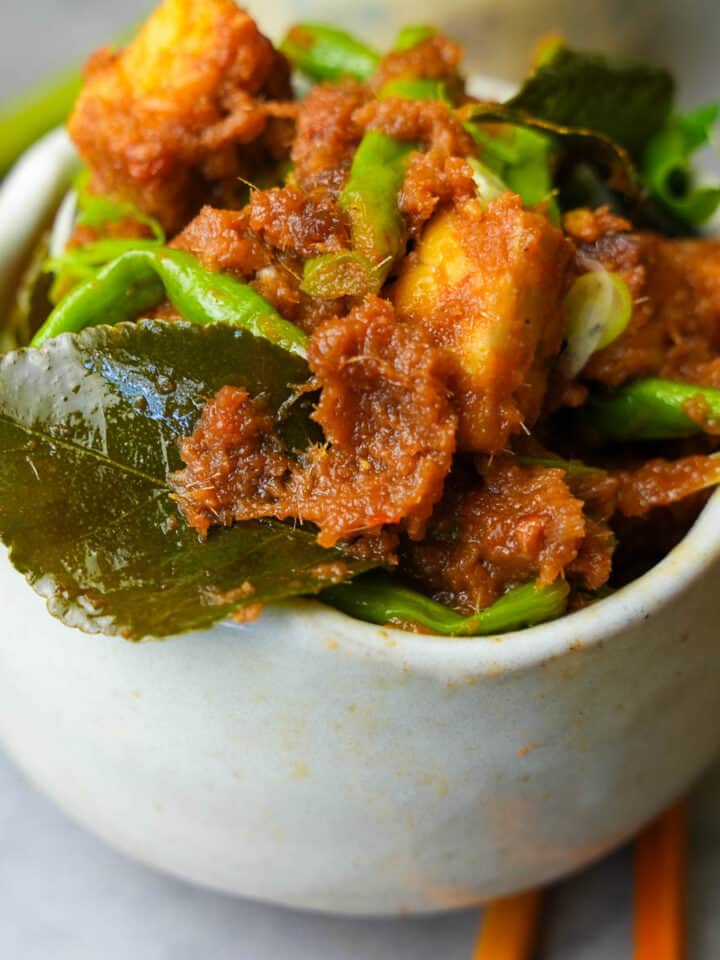






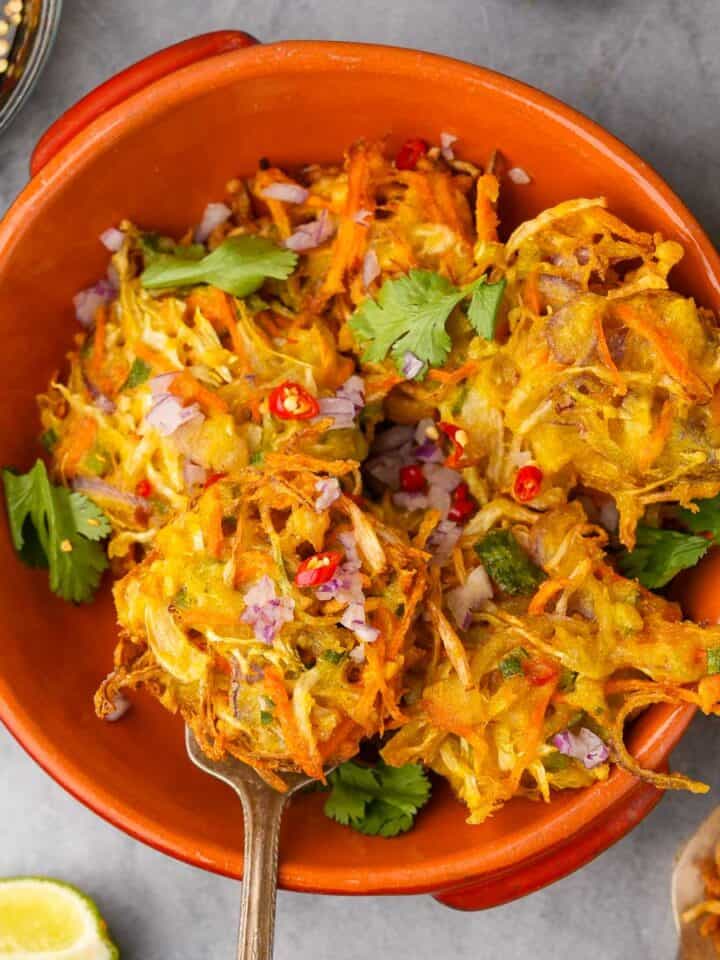
suzanne says
this was easy to make and I used it as a side for pad thai and spaghetti...I put it in wraps for lunch...I even threw some on my 'just egg' and sausage breakfast sandwich. The balance between the scallions, lime, lemongrass and bit of heat from chilis is delightful.